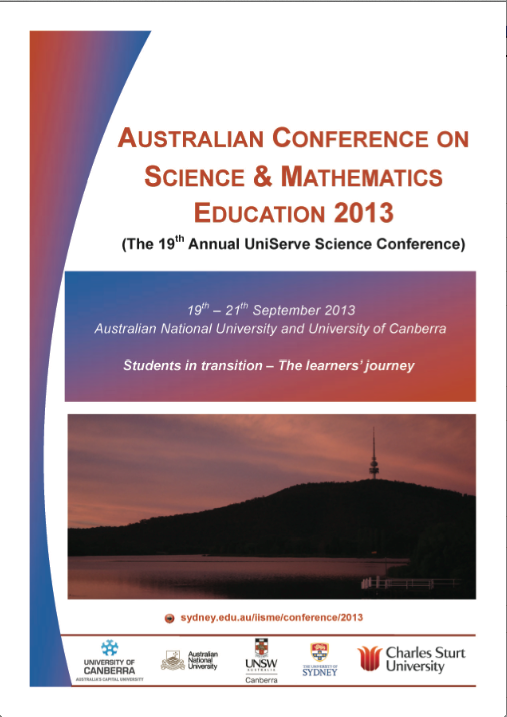Lectures-no-more: An aid to students in transition?
Abstract
A student’s transition to university life is hampered by the quantum leap from small classes with individual help on-hand, to large impersonal lecture halls with minimal peer-peer or peer-instructor interaction. The School of Physics, at Monash University, is investing in purpose built facilities to enable a student-centred, collaborative learning approach to teaching large cohorts; with students being taught in “Studios” that resemble school classrooms. Every such effort should apparently have a good acronym; we have branded our new facilities, and approach ‘PACE’ (Physics and Astronomy Collaborative-learning Environment). The first Australian ‘Studio Physics’ implementation was at Curtin University (Loss & Thornton, 1998; Yeo, 2002). This approach was based upon efforts at Rensselaer Polytechnic Institute (Wilson 1994). Rensselaer ran Studio Physics classes of up to 64 students; Curtin, 36. We will be catering for larger class sizes, as well as having less of a focus on technology, and a greater focus on aspects such as collaboration and the importance of the supporting spaces. Our approach is modelled on SCALE-UP (Beichner, 2008); this brings a version of ‘Studio Physics’ to larger cohorts (over 100 students). It has been adopted by universities across the US and worldwide, and in disciplines other than Physics (Beichner, 2011); most notably, for Physics, TEAL at MIT (Dori, Hult, Breslow & Belcher, 2007). REFERENCES Beichner, R. (2008). The SCALE-UP Project: A student-centered, active learning environment for undergraduate programs. An invited white paper for the National Academy of Sciences, September 2008. Beichner, R. (2011) SCALE-UP: student centred active learning environment with upside down pedagogies. Retrieved June 4, 2013, from http://scaleup.ncsu.edu. Dori, Y.J. Hult, E. Breslow, L. & Belcher, J. (2007). How much have they retained? Making unseen concepts seen in a freshman electromagnetism course at MIT. Journal of Science Education and Technology, 16(4), 299-323. Loss, R. D. & Thornton, D. (1998). Curtin Physics Studio: A progress report. Paper presented at the 1998 Teaching Learning Forum, University of Western Australia. Wilson, J. M. (1994). The CUPLE physics studio. The Physics Teacher, 32, 518-523. Yeo, S. R. (2002). Evaluation of a University Physics Studio Learning Environment: The Interrelationships of Students' Perceptions, Epistemological Beliefs and Cognitive Outcomes. (Doctoral dissertation).Downloads
Published
2013-09-24
Issue
Section
Abstracts
